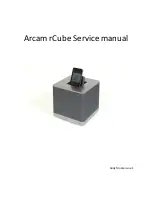
8
Landscape/Hardscape Subwoofer Product Manual
Adjust the Tap Settings
The tap settings will affect the overall volume of each loudspeaker in the
system. When designing a 70V/100V system, care must be taken not to
exceed the power rating of the amplifier or dangerous clipping may occur.
Clipping is the most common cause of damage to loudspeakers and should
be avoided at all times. The standard rule is to design a system that leaves
20% of the amplifier’s rated power as a reserve. For example, with a 300-
watt amplifier, speakers should never be set with taps that total higher than
240-watts. The amplifiers total load is determined by adding the wattage of
each speaker. When thicker wire or exceptionally long wire runs are used, there
is an additional component of current loss due to the cable that can become
significant and must be considered in the calculation.
For a 70V/100V system, most installations are designed to blanket an area using
more loudspeakers at a lower tap setting rather than using fewer speakers at
a higher tap settings. This is done to avoid hot spots where very loud sound
is heard in certain areas and less in others. It is much more common for 70V
speakers to be set at their lowest tap setting than at their highest, but each
installation may require adjustments due to the application or environment.
WIRING INFO - 70V/100V OPERATION
Speaker cable
The amount of wire needed varies with speaker placement. Label speaker
wires with left, right, and location.
Use Russound AW series speaker cable or any reputable brand of 16 to 12
gauge multi-stranded wiring for amplifier- to-speaker connections.
Wire is measured in gauges: the greater the number, the smaller the wire. The
gauge of wire needed is determined by the distance between the amplifier/
receiver and the speakers. The longer the run, the heavier the gauge needed.
Use the following chart as a guide:
Length
Minimum Gauge
0' to 100'
16
50' to 150'
14
100' to 200'
12
The standard colors on the terminals are red Positive (+) and black Negative (-).
If the wire has transparent insulation, one conductor will be copper-colored
(+) and the other silver-colored (-). If the wire has an opaque insulation, the
conductors are differentiated by a series of ribs or grooves, a stripe, or dotted
line on one conductor. Use and mark these as the Positive (+) conductor.
Typical usage of speaker wire conductors
-
+
-
+
AW10-LSUB Tap Settings:
70V: 8W, 16W, 32W, 64W, 128W
100V: 16W, 32W, 64W
8Ω Bypass
AW10-HSUB Tap Settings:
70V: 8W, 16W, 32W, 64W, 128W
100V: 16W, 32W, 64W
8Ω Bypass






























